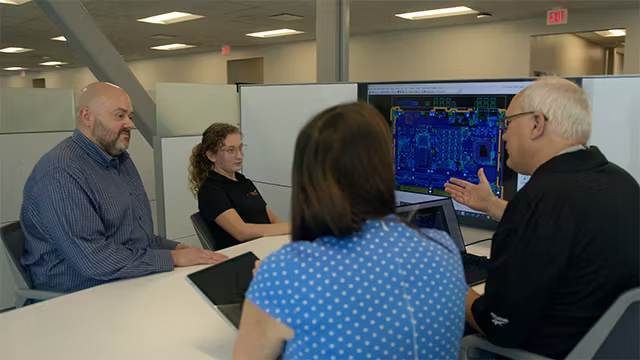Abaco adopts Covid-19 lessons for HPC design
One of the main challenges posed during the Covid-19 pandemic was that of bringing together complex projects at a time when communications were necessarily limited.
The HPC2812 single-board computer from Abaco Systems, a subsidiary of AMETEK, stands as a good example and is now the subject of an online case study, showing how Covid lessons have been taken into today’s post-pandemic environment.
Within Covid constrains, the company needed to bring together teams at more than three locations on three continents, including its headquarters in Huntsville, Alabama and sites in Edinburgh, Scotland and Towcester, England.
It also needed a design that would match high standards. Specifically produced to meet the stringent SOSA (Bilateral Security of Supply Arrangements) requirements observed by the US Department of Defense, the HPC2812 is a ruggedized high-perfomance computer based on dual Intel Xeon D-2700 Processors (Ice Lake-D) in a 40-core configuration with 100GbE capability.
Standards such as SOSA limit the authorized components that design teams like Abaco can use within a mil/aero envelope. “It’s the compute density, the security features, the high-speed data planes, and our software and thermal management approach [that represent Abaco’s added-value],” said Mike Underwood, Division Vice President and Business Unit Manager.
This places particular emphasis on PCB design and underlines the need for a top class team familiar with challenges posed by signal integrity, signal-to-noise ratios and power matching, impedance matching for power delivery, and matching trace geometry for phase coherence.
To free up its in-house expertise, the study describes how Abaco drew upon tools such as those in the Xpedition family from Siemens EDA because they allow dispersed engineers to collaborate on a project at the same time based around a common library. The company then supplemented Xpedition with other Siemens tools: HyperLynx for board-level simulations and signal integrity analysis; and Valor NPI for DFM validation.
The refined combination of an integrated tool flow and real-time virtual collaboration requied for Covid is one Abaco is now continuing to use.
“We learned from the pandemic experience that product design can be done in a virtual environment,” said James McDonald, Hardware Design Engineer at Abaco Systems.
